
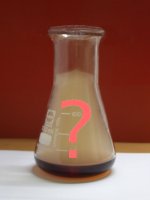

Riddle: Copper (II) chloride and sulphuric acid
When copper (II) chloride dihydrate is added to concentrated sulphuric acid, then it changes its color from bright cyan to dark brown. This change of color takes a few tens of seconds.
When water is added, then this dark brown compound dissolves again, forming green chloro-cuprate (II) complexes and on higher dilution, plain blue aqueous copper (II) ions are formed.
The question, raised during this experiments is: What is the dark brown compound in concentrated sulphuric acid? This riddle is solved, see text below.
![]()
![]() Required
chemicals:
Required
chemicals:
-
copper chloride dihydrate, CuCl2·2H2O
- concentrated sulphuric acid, 96% H2SO4
![]() Required
equipment:
Required
equipment:
-
test tube
![]() Safety:
Safety:
- Sulphuric acid (96%) is very corrosive. Perform this experiment only with good protection of your hands and assure that running water is nearby, just in case some of the acid is spilled.
- Copper chloride is moderately toxic and corrosive.
- In this experiment water is added deliberately to concentrated sulphuric acid dropwise. Always point the test tube away from yourself and other persons, just in case the contents may be swirled out of the test tube. However, the chance of this happening is very low.
![]() Disposal:
Disposal:
-
Copper compounds are moderately toxic for the environment. If very small amounts are used, then the solutions can be flushed down the drain by mixing them with copious amounts of water. If more than a few spatula's of copper chloride are used, then it is best to bring the liquid waste to a proper waste processing facility.
![]()
Procedure for performing the experiment
Add a small amount of copper chloride dihydrate to approximately 1.5 ml of concentrated sulphuric acid in a test tube. This results in a quick change of the color of the solid. It changes color from bright cyan/blue to brown/yellow and finally it becomes very dark brown, almost black. The concentrated acid does not get any significant color, so apparently hardly any copper goes in solution in the acid.
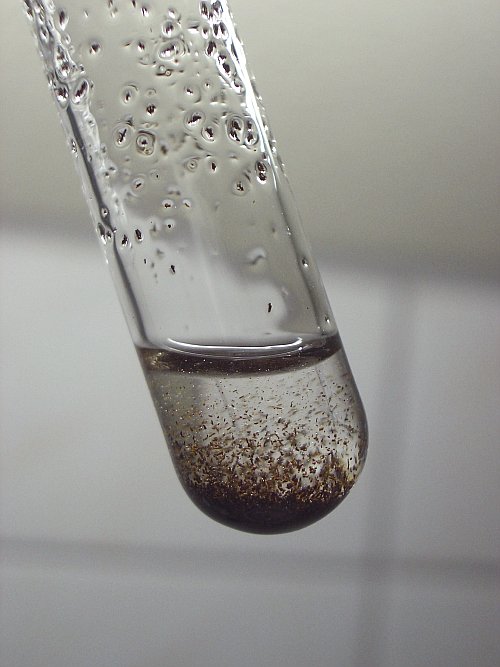
Next, add water dropwise and after each few drops shake well in order. When this is done, then the brown solid dissolves more and more when more water is added. The following sequence of pictures shows the same test tube, each time with some more water added.
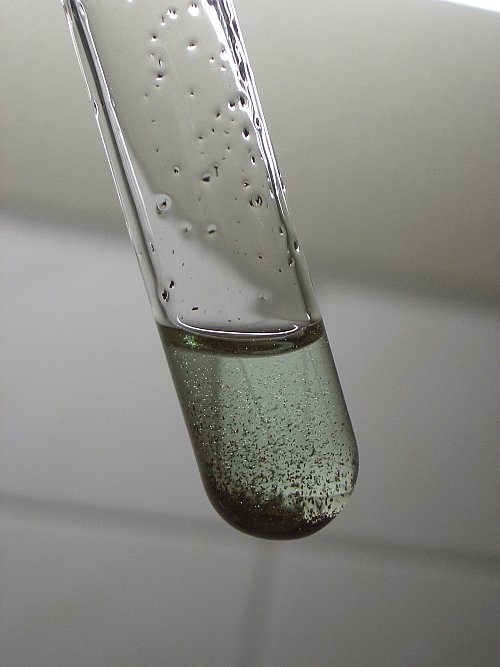
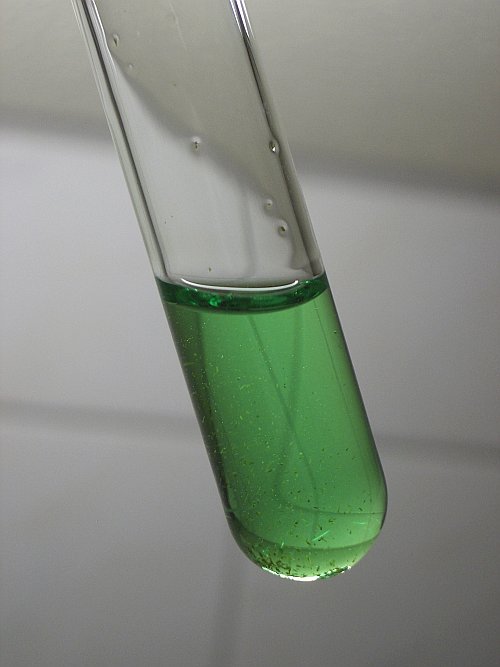
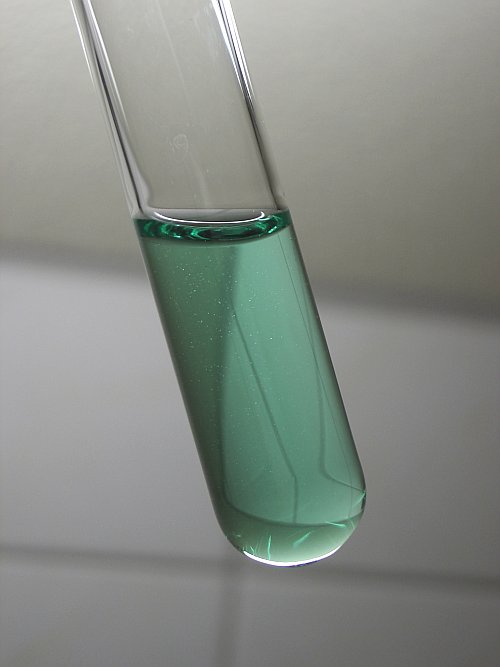
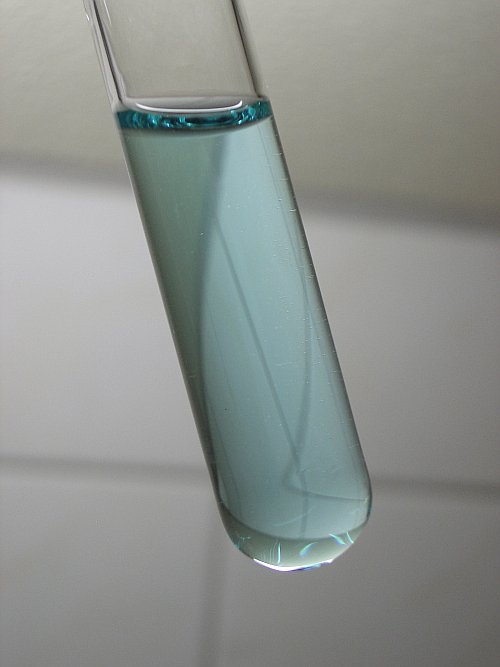
The left picture still shows quite some black solid, with a very pale green liquid above it. The two middle pictures show that the green and cyan colors of liquids with chloro-cuprate (II) ions, mixed with aqueous copper (II). The right picture shows the plain dilute aqueous copper (II) ion.
![]()
Discussion of the results
Copper (II) chloride dihydrate forms a dark brown compound with concentrated sulphuric acid. This compound must be a copper (II) compound, but it is remarkable that it is so dark. So, the question is: What is the dark brown compound? This riddle can be regarded as solved. If very pure copper (II) chloride dihydrate is heated carefully, then all water is lost and exactly the same dark brown compound remains. This dark brown compound hence must be anhydrous copper (II) chloride. When the dark brown compound is allowed to cool down and some water is added, then all of it dissolves, without leaving any residue. So, the dark brown compound cannot be a basic copper chloride. Combining this observation with the observation, presented in this page, the riddle can be regarded as being solved. The sulphuric acid has such strong dehydrating capabilities, that it dehydrates the copper (II) chloride and the dark brown anhydrous form remains.
The sequence of colors, obtained by adding more and more water can be explained. At low water concentration, the concentration of the copper and chloride ions is relatively high. At these concentrations there will be quite some yellow/green tetrachlorocuprate (II), CuCl42-. Mixed with plain blue aqueous copper (II) ions, different shades of green can be obtained. Finally, when the liquid has become quite dilute, only blue aqueous copper (II) ions remain.